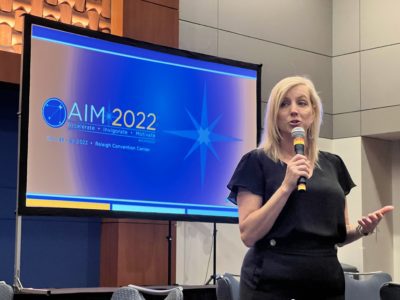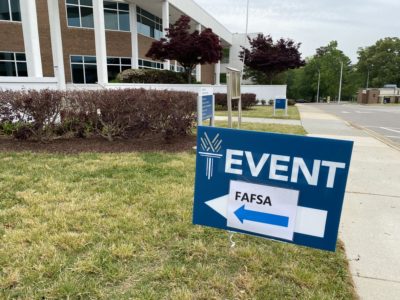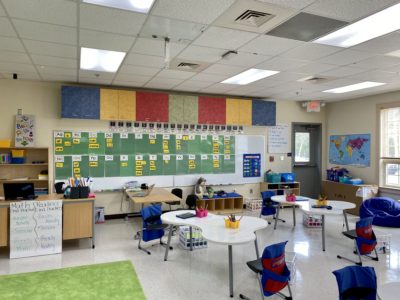

|
|
Enthusiastic hands shot in the air when Bertie High School teacher Lori Speller asked her students to name rivers in Bertie County. It seemed these students couldn’t get called on fast enough as they waved their hands eagerly, practically bursting with the answers.
“Give me another river,” Speller requested, to which a student exclaimed, “Me! Me! Me! Me!”
Speller finally chose a student who called out, “Roanoke.” “The Roanoke,” Speller echoed, and wrote it on the whiteboard while another student, still raising their hand, joked, “My arm’s getting tired.”
Dr. Arwin Smallwood observed from the back of Speller’s classroom decorated with maps of Bertie County and laughed while watching the students’ excitement for their course — a course based on a book he wrote.


Over two dozen students at Bertie High School are in a first-of-its-kind Bertie County history course. When students are able to learn more about their own local history, a sense of pride sets in, said Dr. Linda Bulluck, Bertie County Schools executive director of curriculum and instruction.
“I think that when students know who they are and develop a sense of pride, then they’re able to be more positive assets and contributors to society,” Bulluck said.
Arwin Smallwood visited Bertie High School on Feb. 13 to meet students in the Bertie County history class and answer their questions about his book. Students spent the period reviewing the county’s geography and important locations.
A native of Bertie County and chair of the department of history and political Science at N.C. A&T State University, Arwin Smallwood wrote “Bertie County: An Eastern Carolina History” as a means of expanding on his dissertation.
“It was not even in my mind that it was even a possibility that one day I would be the author of a book like the textbooks we were using in class,”Arwin Smallwood told Speller’s students.
Arwin Smallwood’s book began its journey to this classroom through a family connection when he gave a copy of his book to his cousin, Dr. Otis Smallwood, the superintendent of Bertie County Schools.
“The book was just so engaging about home,” Otis Smallwood said. “All these areas of Bertie that I’ve walked in, seen, I’ve been a part of. A lot of it happened right on my street.”
Otis Smallwood said he then got the idea of sharing the book with students in his district, and soon a partnership formed with Arwin Smallwood, N.C. A&T, and Bertie County schools. Bulluck said A&T is working on compiling supplemental materials for students to use in the class.
Bulluck said community partnerships like this one are part of the district’s strategic plan.
“It’s not just words on the paper, we’re actually doing the work that we set out (to) do,” Bulluck said.
Educators and school officials worked together to develop curriculum for the course, which began at the beginning of the 2024 spring semester.
“We prepare these kids to be global learners and to be connected. And our own local history played such a big part in a lot of U.S. history and world history. But these facts are just not known,” Otis Smallwood said.
Bertie County — and more broadly the northeastern portion of North Carolina — is often overlooked, Arwin Smallwood said, though Bertie was part of the original Albemarle County, the first county in North Carolina with a diverse and vibrant blend of culture coming from Black, Indigenous, and European people in the area.
“It’s not one single culture that really developed this county, but it’s a merging of and a combination of different peoples and cultures that helped to create us and develop us into who we are,” Arwin Smallwood said.


Today, Bertie County is one of just a handful of North Carolina counties with a majority-Black population, with 60.4% of its residents identifying as Black in the 2o2o Census.
Otis Smallwood said it’s important for people of color to learn about the vital roles they played in local history.
“It’s very important for people of color and everybody just to know how they’re connected to society, are connected to the world because the world’s becoming more connected anyway,” Otis Smallwood said.
Arwin Smallwood said he hopes students are able to leave the course with an understanding of the significance of their ancestors and of themselves. He said when individuals learn about their roots, it takes them to a different level, and allows them to appreciate history in a personal way rather than from a distance.
“It also introduces to them possibilities — what they can become and what they can do, which they may not be able to see in the moment that they’re in,” Arwin Smallwood said.








